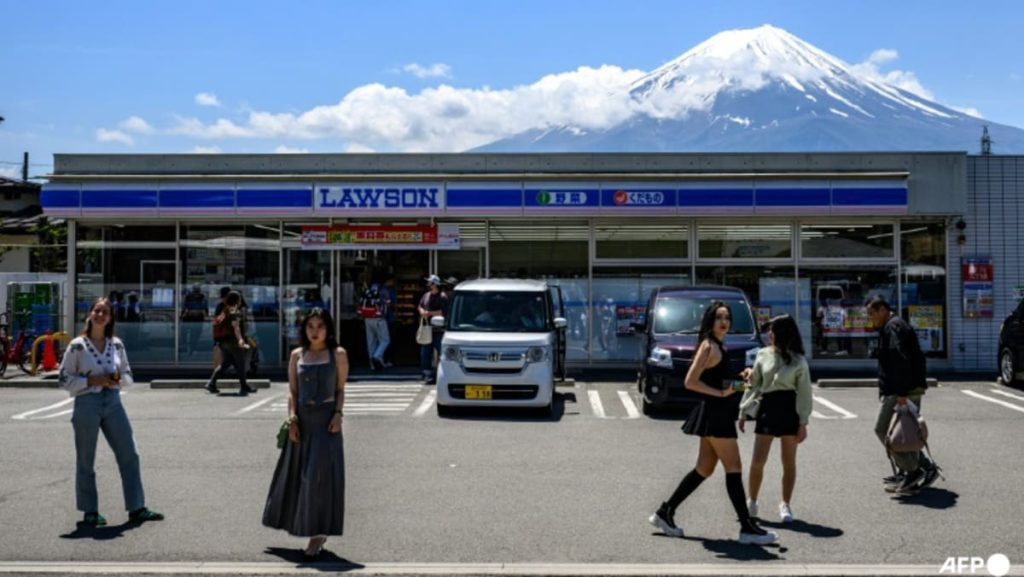A barrier made of netting measuring 2.5m by 20m has been installed at a popular vantage point in Japan to address issues caused by an influx of tourists. The convenience store chain Lawson issued an apology to residents and customers for the inconvenience caused. Signs in multiple languages have been put up to prohibit crossing the street in front of the store, and the company is considering deploying private security staff as well. This move comes as Japan sees record numbers of overseas tourists, with monthly visitors exceeding three million in March for the first time.
In Kyoto, a hotspot for tourists, locals have expressed concerns about tourists harassing the city’s famed geisha. This is a common issue in tourist destinations worldwide, where the influx of visitors can lead to friction with local residents. In response to this, measures such as the installation of barriers and the implementation of rules and guidelines are being put in place to manage the impact of tourism on local communities and attractions.
The congestion caused by tourists is also an issue at Mount Fuji, where hikers will now be charged US$13 each to use the most popular route. This fee aims to reduce numbers and improve safety by capping the amount of people climbing the mountain. As tourist numbers continue to rise, both in Japan and globally, destinations are looking for ways to manage the impact of tourism on the environment, infrastructure, and local communities.
Lawson’s response to the situation at the vantage point includes measures such as dispatching staff from headquarters and putting up signs to inform visitors of the rules. The company’s apology and efforts to address the issues caused by the popularity of the spot demonstrate a recognition of the need to balance the benefits of tourism with the concerns of local residents and other stakeholders. This approach reflects a growing awareness of the importance of sustainable tourism practices and the need to manage tourism in a way that benefits both visitors and local communities.
As Japan continues to attract record numbers of tourists, destinations across the country are facing similar challenges related to managing the impact of tourism. By implementing measures such as charging fees at Mount Fuji and installing barriers at popular vantage points, authorities are seeking to strike a balance between welcoming visitors and preserving the integrity of their natural and cultural attractions. These efforts underscore the importance of sustainable tourism practices and responsible tourism management in addressing the challenges posed by the rapid growth of the tourism industry.













